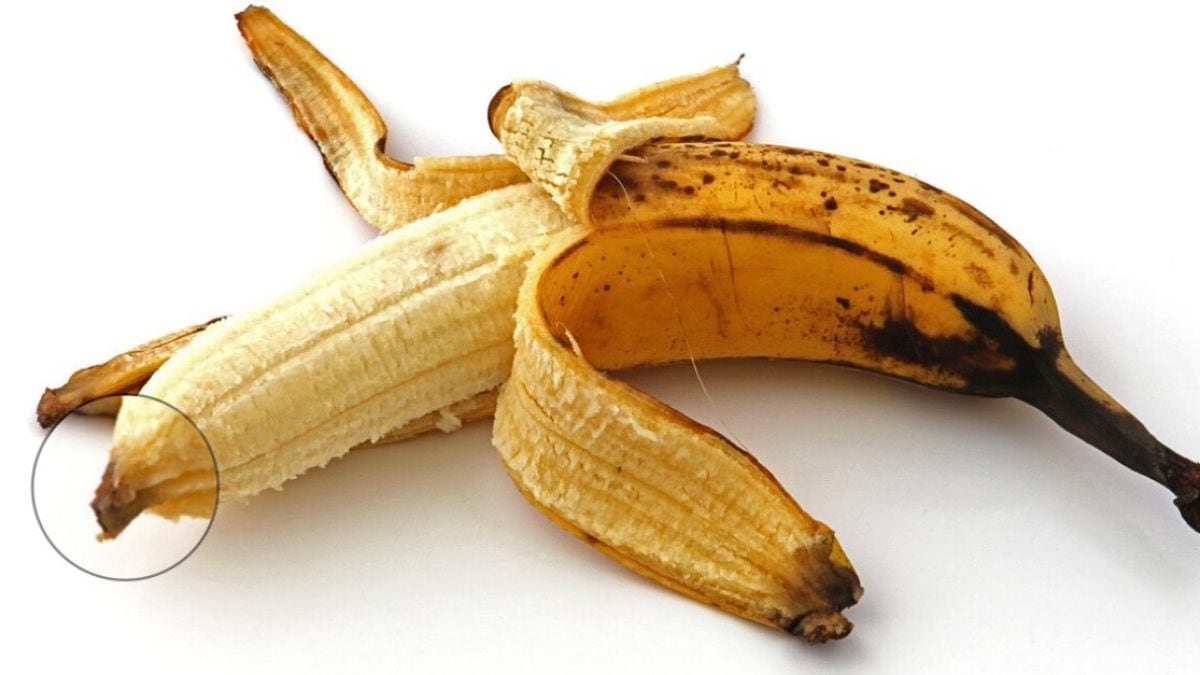
A false myth circulating on the web is that of the banana base: eating it could be harmful to your health, if not downright lethal. What creates particular concern is the e darkened tip: that black dot found at the end of the bananas is called the calyxic apex and is basically the stem of the flower. We'll explain why this is fake news and why there is no danger in ingesting that part of the banana.
What is the Calyxic Apex, the Base of The Banana?
Both the tip and the base of the banana, especially when the fruit is very ripe, can have a different appearance from the rest of the pulp, perhaps darker or with a slightly different consistency: this can lead one to think that they are inedible parts. Sometimes, the myth of the poisonous part of the banana is associated with the stem tip, as it is a less commonly consumed part. But what is the apex of the calyx? It is precisely that small part at the base of the banana, where the fruit was attached to the plant. It is also sometimes called the banana "flower", even though it is not a real flower.
Can the Apex of the Calyx be Consumed?
Generally yes, the calyxic tip is edible: no specific toxic or allergenic substances have ever been identified in this part of the banana. However, there are some considerations to make, with respect to the specific variety for example: the flavor and consistency of the calyxic tip can in fact vary depending on the variety of banana. More bitter and less tender than the rest of the fruit, in some cases it could even be woodier or with a slightly bitter taste. Furthermore, the stem tip of a very ripe banana may be softer and easier to eat.
Like the rest of the banana, the calyx contains mainly carbohydrates, but in smaller quantities than the pulp; additionally, it is rich in fibre, which promotes digestion and a sense of satiety. There are no particular dangers or contraindications in consuming the calyxic apex, unless you are allergic to bananas or other plants of the same family: however, it is always advisable to wash the fruit well before consuming it. In some cultures, the calycine apex is used in cooking to prepare particular dishes or as an ingredient for infusions.
What About the Tip of the Banana?
Even the end opposite the petiole where the calyxic apex is located, or the tip of the banana, is often the subject of some perplexity: even in this case, there is no danger in consuming this part of the fruit. The blackening that is sometimes observed in this area is due to natural oxidation processes and does not indicate the presence of harmful substances: at least there is no scientific evidence that this part can be compromised. It is also a part of the fruit rich in fiber and nutrients.

Which Parts of the Banana are Edible
Besides being delicious, the banana has other edible parts, though they are less commonly known or consumed.
- Peel. Although it is often discarded, banana peel is edible and contains fibre, antioxidants and other nutrients: it can be consumed raw (better if organic and well washed) or cooked, for example added to smoothies or desserts.
- Flowers. Banana flowers are a delicacy in some cultures: they can be eaten raw, cooked or fried, and have a delicate, slightly sweet flavor.
- Heart Of The Trunk. The tender heart of the banana trunk is edible and is used in some Asian cuisines. It has a similar texture to celery and can be added to soups or stews.
- Seeds. Although commercially grown bananas have few or no seeds, some wild varieties do: they can be eaten roasted or ground.
;Resize,width=767;)
